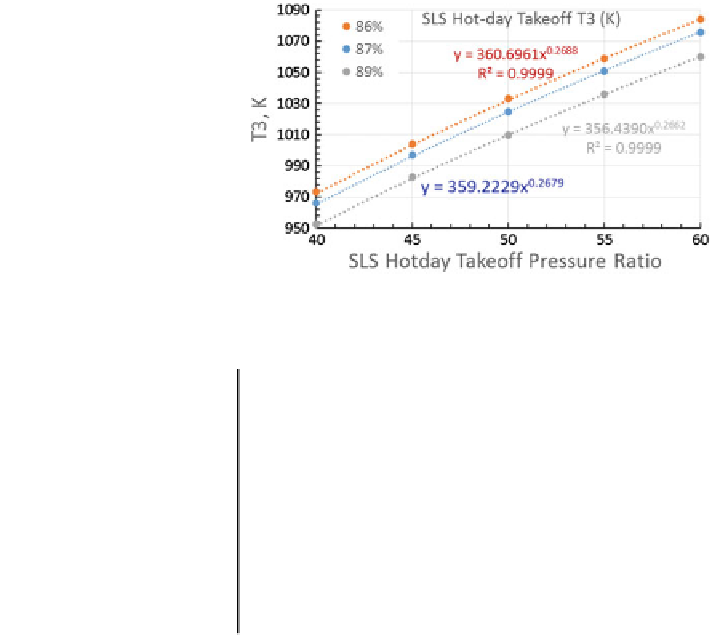Environmental Engineering Reference
In-Depth Information
Fig. 20 SLS hot-day takeoff
combustor inlet temperature
versus ICAO takeoff pressure
ratio for different isentropic
efficiencies
Table 5 Academic ignition delay times (ms) for 45 and 60 takeoff pressure ratio from Sung
(
2014
)
SLS takeoff pressure ratio
45
60
ICAO T3*, K
902.6
889.6
974.8
960.4
˄
ign
(for 0.7
˕
), ms
1.82
1.83
1.02
0.82
˄
ign
(for l.0
˕
), ms
1.19
1.19
0.73
0.76
Det. Hot-day** T
3
, K
1004.0
989.9
1084.0
1068
˄
ign
(for 0.7
˕
), ms
1.08
1.27
0.34
0.41
˄
ign
(for l.0
˕
), ms
0.83
0.98
0.27
0.32
*
ʷ
isen
, %
87
89
87
89
**
ʷ
isen
, %
86
88
86
88
damage. The minimum
˄
ign
of 0.83 ms for the hot-day, fully deteriorated engine at
stoichiometric condition can therefore be considered safe for this engine. If one
moves forward with an N + 1 generation 60 OPR engine, then the calculated
˄
ign
goes down by a factor of 3
0.27 ms with potential for requiring changes in the
combustor design in order to address F
-
3
concerns, if any. However, there will be
some increase in
˄
ign
to 0.32 ms for the N + 2 generation engine.
2.6 Operability Challenges
Combustion system is a unique part of the gas turbines in that its design require-
ments have to be met from engine start to the most severe operating conditions
including the highest engine pressure and temperature levels, as discussed in the
previous section. There are several demanding requirements beyond low-emissions
including durability, shop visits, and combustor exit temperature quality that rarely
get the attention of the people beyond the combustion design community. An
aviation engine must perform reliably over its
fl
flight envelope. The theoretical















Search WWH ::

Custom Search